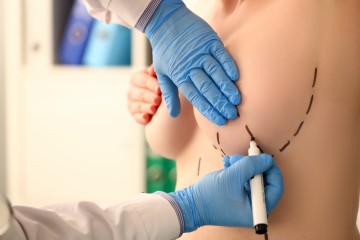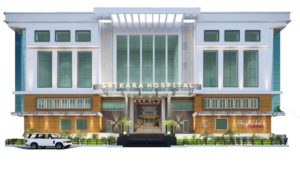Breast reduction surgery, also called as reduction mammaplasty, is a surgical technique to reduce the size and reshape the breasts. This operation primarily sought to alleviate physical and emotional discomfort caused by excessively large breasts.
Some common issues experienced by women with large breasts include chronic back, neck, and shoulder pain, posture problems, skin irritation and rashes beneath the breasts, difficulty finding well-fitting bras and clothing, limitations in physical activities and exercise, and emotional distress related to self-image and body confidence.
Who is a Right Candidate for Breast Reduction Surgery?
Individuals who are good candidates for breast reduction surgery are those with excessively large and heavy breasts that cause physical and emotional discomfort.
Other potential candidates may include women with significant breast asymmetry, difficulty finding well-fitting clothes, and those who feel self-conscious about their breast size. Before the procedure, patients must have realistic expectations and fully understand the potential risks and complications associated with the surgery.
Preparing for Breast Reduction Surgery:
It involves a thorough physical examination, medical history review, and necessary laboratory tests. Patients should inform their surgeons about any medical conditions they have and disclose all medications they are taking. It is important to quit smoking several weeks before the surgery and limit alcohol consumption.
Additionally, patients should arrange for someone to drive them home after the surgery and help with daily activities during the initial recovery period.
What to Expect During the Surgery?
During the surgery, which typically lasts between two to four hours, the patient will be under general anesthesia. The surgeon will make incisions in the breasts to remove excess tissue, fat, and skin. To achieve a more natural appearance, the nipple, and areola may be repositioned. The incisions are then closed with sutures, and the breasts are bandaged.
Recovery Care After Surgery:
After the surgery, patients can expect to experience pain and swelling in the breasts. Wearing a surgical bra or compression garment is often recommended to provide support and reduce swelling. Strenuous activities should be totally avoided for several weeks, and patients should adhere to their surgeon’s instructions regarding the resumption of regular activities. While scars will fade over time, they may take up to a year to fully mature.
Dos and Don’ts for Recovery:
Dos:
- Follow your surgeon’s instructions for pre-operative preparation, including stopping smoking and limiting alcohol consumption.
- Arrange for someone to assist you after the surgery and during the initial recovery period.
- Wear a compression garment or a surgical bra as directed by your surgeon for support and to reduce swelling.
- Attend follow-up appointments to monitor progress and healing.
Don’ts:
- Indulge in strenuous activities for several weeks after the surgery.
- Lift heavy objects or raise your arms above your head during the initial recovery period.
- Take any medications or supplements without first consulting your surgeon.
- Ignore signs of infection, such as fever, increased pain, or redness around the incision site.
When to Contact Your Doctor:
It is essential to watch for any signs of complications after breast reduction surgery. You should immediately contact your doctor if you experience severe pain not relieved by medication, excessive bleeding from the incision site, signs of infection, difficulty breathing, unusual swelling or fluid buildup in the breasts, or numbness or loss of sensation in the breasts or nipples.
Recovery Time:
Recovery time after breast reduction surgery varies, but most people can return to work and normal activities within 2-4 weeks. Full healing and results may take several months.
Breastfeeding After Surgery:
Breast reduction surgery may affect your ability to breastfeed, depending on the extent of the surgery and the technique used. While some women can still breastfeed successfully after the procedure, others may encounter difficulties. If breastfeeding is a concern, discussing it with your doctor before undergoing the surgery is essential.


